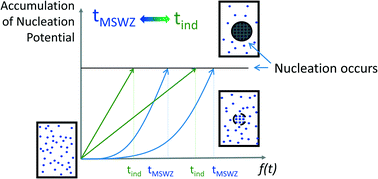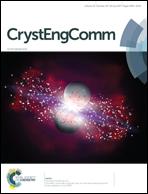Relating induction time and metastable zone width†
Abstract
A relation between induction time and metastable zone width in cooling crystallization has been developed based on the correlation between temperature and supersaturation with the induction time in the classical nucleation theory. By this relation, the nucleation times in linear cooling experiments and the induction times at constant temperature can be estimated from each other, i.e. estimating metastable zone widths from experimental induction times or interfacial energy and the pre-exponential factor from metastable zone widths. Ascorbic – water system, with 120 induction times and 192 metastable zone widths determined, and several systems reported in the literature, have been investigated to compare the estimated values of metastable zone width/induction time with experimental values, respectively. The estimated metastable zone widths are fairly consistent with the experimental values. The differences between experimental literature values of metastable zone widths and the estimated values using the literature induction times range from 0.1 K to 10 K with an average of 2.5 K. For two systems (paracetamol in ethanol and salicylic acid in ethyl acetate), estimated and experimental results are of very good consistency with an average uncertainty of only about 5%. More accurate extrapolations of the induction times from metastable zone widths have been investigated. The potential utilities of this approach in crystallization research and process understanding are discussed.



 Please wait while we load your content...
Please wait while we load your content...